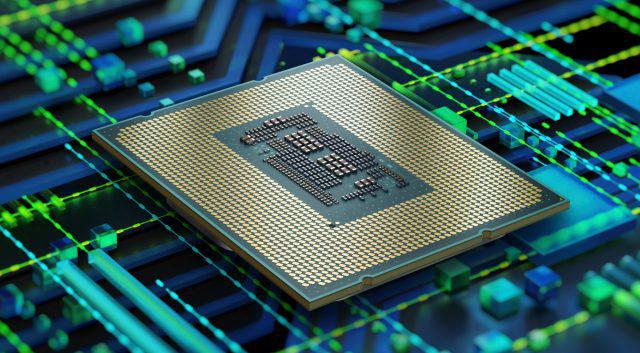Analysis Intel has shed some light on how it hopes customers will create single-package processors in which x86, Arm and RISC-V cores work together.
For that, Intel will license its most important asset, the x86 architecture, to those who want to make custom silicon. Depending on the application, customers will be able to mix up x86, Arm and RISC-V CPU cores as well as hardware acceleration units in a custom-designed chip that Intel fabricates.
"We have what we call a multi ISA strategy. That's the first time in Intel's history we'll license x86 soft cores and hard cores to customers who would like to develop chips," Bob Brennan, vice president of customer solutions engineering at Intel's Foundry Services, told The Register.
A soft core being a CPU core that can be implemented in programmable logic, such as an FPGA, or in a specific application chip you're designing, whereas a hard core is a black-box design placed within a custom chip. Simply put, a soft core is useful for prototyping and special circumstances, and a hard core is most useful when you want to make a production-grade part.
That's the first time in Intel's history we'll license x86 soft cores and hard cores to customers who would like to develop chips
Licensing x86 cores is part of a broader strategy to help customers build computing chips so that Intel can keep its assembly lines busy. Intel recently committed $20bn to open factories near Columbus, Ohio by 2025, and is expanding capacities at fabs in the US and Ireland.
Specifics were not available on which Intel x86 cores would be licensed and how, nor what level of customization would be available to customers. Intel alluded to licensing its CPU tech early last year when it said it wanted its foundry service to offer "a world-class IP portfolio for customers, including x86 cores as well as Arm and RISC-V ecosystem IPs."
Arm, meanwhile, licenses blueprints for CPU, GPU and acceleration cores to chip designers, and has also architectural licenses with big customers, such Apple, that allows them to design their own homegrown Arm-compatible cores. The latter is how Apple designed its own M1 Arm-compatible silicon for latest-gen Macs as well as system-on-chips for its iPhones and iPads.
Intel is taking a Lego-like approach to chip making in which customers will be able to create custom processors by mixing and matching Arm and RISC-V cores with licensed x86 cores, as an application warrants. The cores based on different architectures will be interconnected and work in tandem to execute system software and programs. It appears the cores will be grouped onto chiplets: these are small electrically connected dies arranged within a processor package. The x86 cores could go on one chiplet, Arm on another, and RISC-V on another, for instance.
In the chiplet chassis, we expect there will be demand for Arm and RISC-V, depending on which customer it is, and will support both
Brennan provided an example: customers will be able to build a chip with licensed Xeon cores and match them up with an AI accelerator that's based on the RISC-V specification or Arm IP. Intel has also created what it calls a chiplet chassis, in which dies of x86, Arm and RISC-V cores can be put together and packaged to form a coherent chip.
"In the chiplet chassis, we expect there will be demand for Arm and RISC-V, depending on which customer it is, and will support both," Brennan said, adding: "We have not fully developed our strategy, but the concept is similar in that we want to enable the ecosystem of IP around our products."
In other words, Intel's licensing of x86 may not be quite like the way Arm and others license their CPU core designs, in which Arm provides the blueprints to a customer, which arranges the designs as they need, and then sends them off to someone else to manufacture. Instead, it sounds more like Intel is allowing chip architects to pick and choose the cores and acceleration engines they want, x86 and otherwise, in a way that they want to create their own highly customized x86-compatible components, using Intel's manufacturing facilities and know-how.
That way we could see the rise of Xeon-powered processors that have features not generally found in Intel's official Xeon product families.

Intel hopes that licensing x86 and allowing it to coexist with Arm and RISC-V will spark innovation in chip design and create a preference for its wafers and packaging technology, which will keep its factories in demand.
“Broadly speaking, this is to grow our wafer and packaging business as IFS [Intel Foundry Services] is trying to be an excellent foundry for the world. And this shows how Intel is committed to growing foundry business with all these different ISAs moving forward,” Brennan said.
Brennan didn’t say if these chiplet chassis designs would be transferable to factories belonging to rivals like TSMC. Intel has packaging technology unique to its factories, including Foveros, which allows stacking of compute tiles and EMIB (Embedded Multi-die Interconnect Bridge), which allows for high-speed communication between multiple dies inside a single package.
The road ahead
Intel CEO Pat Gelsinger is pursuing a manufacturing future, and licensing x86 could be a critical part of that transformation. Intel typically limited its fabs to its own x86 processors, and has invested billions in opening new factories. Crucially, Intel appears to want to make a real go of its foundry service, in which chip designers pay Intel to make components for them just like TSMC and Samsung are paid to make parts for companies around the world. Qualcomm, which designs system-on-chips containing designs licensed from Arm, will use Intel's factories.
These developments also come as Arm and RISC-V make a dent, to a degree, in Intel's decades-long x86 dominance in PCs and servers. Keeping x86 mostly under wraps hasn't helped Intel: Apple is moving its personal computers to Arm. Amazon, Google, and Microsoft are also chasing Arm-based chips for home and server systems.
Intel last week established a $1bn fund to advance chip design and development for advanced nodes and manufacturing technologies. One goal is to overcome design challenges for chips in which x86, Arm, and RISC-V co-exist.
Intel also expanded its intellectual property alliance with Arm so that the latter's chip blueprints are optimized for the former's manufacturing techniques. Intel also became a premium member of RISC-V International, which manages the development and direction of the open-source, royalty-free instruction set architecture.
The multi-ISA chips are targeted for production on Intel 16, which was formerly called 22FFL, and is roughly equivalent to other foundry 16nm offerings. It is also targeted at Intel 3 process node tech, which will begin production next year, and the Intel 18A processes, which is slated for 2025.
Intel 3 is an enhanced version of the current Intel 4, which produces 7nm chips and is the first to use EUV lithography. In 18A, Intel will use a new transistor technology called RibbonFET as well as a new backside power delivery scheme called PowerVia, which the company has previously detailed.
The chiplet chassis follows the open-standard Advanced Microcontroller Bus Architecture, which will facilitate communication between diverse cores on the chip. AMBA is popular in the Arm ecosystem.
"We've made it such that either Arm or RISC-V cores would work in and also we've made it such that those connect seamlessly and cleanly to the Xeon by something called CXL. These buses are an open standard," Brennan added.
CXL refers to the Compute Express Link interconnect, which allows processors and interconnects to communicate.
To be sure, licensing x86 isn't totally unprecedented. Intel cross-licensed x86 with AMD and the rival has developed custom chips for gaming consoles. AMD in 2016 also licensed its x86 technology to a joint venture between AMD and a consortium of public and private Chinese companies. In 2019, the US Department of Commerce banned the technology exchange after placing AMD's partners in China on an Entity List.
RISC-V is also emerging as a viable chip architecture amid semiconductor shortages and trade wars. China and Europe are developing sovereign RISC-V chips with the goal of having cheaper alternatives to x86 and Arm. Nvidia recently walked away from buying Arm for $40bn following heavy opposition from competition regulators.
Intel will also help boost an open-source software ecosystem for RISC-V, Brennan said.
"We're not planning on getting paid on our software for RISC-V. We're just trying to make it better for the world, indirectly to create silicon. So that's why it's perhaps easier for us to be a full-faith open partner," Brennan concluded. ®
Get our Tech Resources



